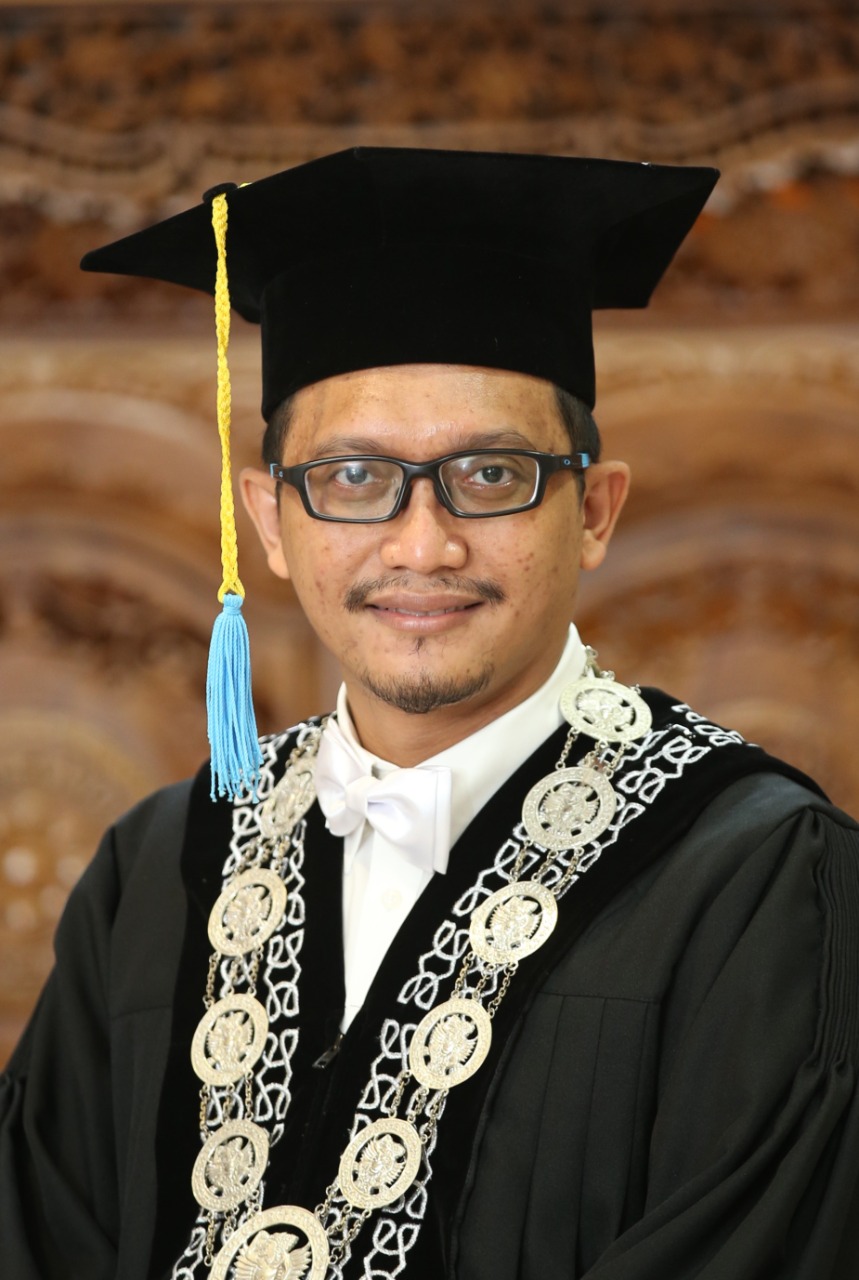Nutritional Status Based on Four Anthropometric Indices and Associated Factors in Children between the Ages 0-2 Years Old in a Slum of Surabaya

Downloads
Methods: This study used a cross-sectional descriptive study from primary data conducted by anthropometric measurement directly on toddlers and interviews with caregivers. Assessment of four anthropometric indices includes weight-for-age, height-for-age, weight-for-height, and head circumference-for-age. A sample of 50 toddlers was taken by proportional random sampling technique.
Results: 31 children (62%) aged 0-2 years old in RW 08 Bulak Banteng sub-district had normal growth status based on weight-for-age, height-for-age, weight-for-height, and head circumference-for-age. The remaining growth status of 27 children (54%) is as follows. Based on the weight-for-age index, a child (2%) was severely underweight, and 7 children (14%) were underweight. Based on the height-for-age index, 4 children (8%) were severely stunted, and 7 children (14%) were stunted. Based on the index of weight-for-height, a child (2%) was severely wasted, and 5 children (10%) were wasted. Based on the index of head circumference-for-age, there were 1 child (2%) microcephaly and 3 children (6%) macrocephaly.
Conclusion: This study found that many children aged 0-2 years old in the slum area of RW 08 Bulak Banteng sub-district in Surabaya experienced growth delays.
Indonesia KKR. Penuhi Kebutuhan Gizi pada 1000 Hari Pertama Kehidupan. Jakarta, 2012.
Imdad A, Yakoob MY, Bhutta ZA. Impact of Maternal Education about Complementary Feeding and Provision of Complementary Foods on Child Growth in Developing Countries. BMC Public Health 2011; 11 Suppl 3: S25.
Rayhan MI, Khan M. Factors Causing Malnutrition among Under Five Children in Bangladesh. Pakistan J Nutr; 5. Epub ahead of print 1 June 2006. DOI: 10.3923/pjn.2006.558.562.
Abuya BA, Ciera J, Kimani-Murage E. Effect of Mother's Education on Child's Nutritional Status in the Slums of Nairobi. BMC Pediatr 2012; 12: 80.
Sengupta P, Philip N, Benjamin A. Epidemiological Correlates of Under-Nutrition in Under-5 Years Children in an Urban Slum of Ludhiana. Health Popul Perspect Issues 2010; 33: 1–9.
Srivastava A, Mahmood SE, Srivastava PM, et al. Nutritional Status of School-Age Children - A Scenario of Urban Slums in India. Arch Public Health 2012; 70: 8.
Vinod N, Swarnakanta L, Smita P, et al. Nutritional Status and Dietary Pattern of under Five Children in Urban Slum Area. Nat J Community Med; 2.
Indonesia KKR. Hasil Pemantauan Status Gizi (PSG) Tahun 2017. Jakarta, 2018.
Muchlasin. Gambaran Kehidupan di Kampung Bulak Banteng. Universitas Islam Negeri Surabaya, 2016.
Kusumastuti. Kajian Prasarana dan Sarana Lingkungan Permukiman Kumuh di Bulak Banteng Surabaya. Surabaya, 2005.
Andini I. Sikap dan Peran Pemerintah Kota Surabaya Terhadap Perbaikan Daerah Kumuh di Kelurahan Tanah Kalikedinding Kota Surabaya. Kebijak dan Manaj Publik 2013; 1: 36–47.
Zhang J, Shi J, Himes JH, et al. Undernutrition Status of Children under 5 years in Chinese Rural Areas - Data from the National Rural Children Growth Standard Survey, 2006. Asia Pac J Clin Nutr 2011; 20: 584–592.
Santoso AB. Hubungan antara Kelahiran Prematur dengan Tumbuh Kembang Anak pada Usia 1 Tahun. Universitas Diponegoro, 2003.
Christian P, Lee SE, Donahue Angel M, et al. Risk of Childhood Undernutrition Related to Small-for-Gestational Age and Preterm Birth in Low- and Middle-Income Countries. Int J Epidemiol 2013; 42: 1340–1355.
Santos IS, Matijasevich A, Domingues MR, et al. Late Preterm Birth is a Risk Factor for Growth Faltering in Early Childhood: A Cohort Study. BMC Pediatr 2009; 9: 71.
Kumar RK, Singhal A, Vaidya U, et al. Optimizing Nutrition in Preterm Low Birth Weight Infants-Consensus Summary. Front Nutr 2017; 4: 20.
Fitri D, Chundrayetti E, Semiarty R. Hubungan Pemberian ASI dengan Tumbuh Kembang Bayi Umur 6 Bulan di Puskesmas Nanggalo. J Kesehat Andalas; 3. Epub ahead of print 1 May 2014. DOI: 10.25077/jka.v3i2.51.
Durmuş B, van Rossem L, Duijts L, et al. Breast-Feeding and Growth in Children until the Age of 3 Years: the Generation R Study. Br J Nutr 2011; 105: 1704–1711.
Anggraini D. The Effect of Breast Milk toward Children's Growth: A Systematic Review. LIFE Int J Heal Life-Sciences; 3. Epub ahead of print 1 January 2017. DOI: 10.20319/lijhls.2017.31.1428.
Vora HD, Reddy D V., Prajapati VJ, et al. Study of Feeding Practices and Vaccination Status Effect on Growth and Illness in Children of 6months to 2years. Natl J Community Med 2017; 8: 385–389.
Ahmed MM, Hokororo A, Kidenya BR, et al. Prevalence of Undernutrition and Risk Factors of Severe Undernutrition among Children Admitted to Bugando Medical Centre in Mwanza, Tanzania. BMC Nutr 2016; 2: 49.
Kristiyanasari W. Gizi Ibu Hamil. Yogyakarta: Nuha Medika, 2010.
Marmi, Rahardjo K. Asuhan Neonatus, Bayi, Balita, dan Anak Prasekolah. Yogyakarta: Pustaka Pelajar, 2012.
Fall CHD, Sachdev HS, Osmond C, et al. Association between Maternal Age at Childbirth and Child and Adult Outcomes in the Offspring: A Prospective Study in Five Low-Income and Middle-Income Countries (COHORTS Collaboration). Lancet Glob Heal 2015; 3: e366-77.
Hartawan I, Windiani IGAT, Soetjiningsih S. Karakteristik Tumbuh Kembang Anak di Tempat Penitipan Anak Werdhi Kumara 1, Kodya Denpasar. Sari Pediatr 2016; 10: 134.
Ni'mah C, Muniroh L. Hubungan Tingkat Pendidikan, Tingkat Pengetahuan dan Pola Asuh Ibu dengan Wasting dan Stunting pada Balita Keluarga Miskin. Media Gizi Indones 2015; 10: 84–90.
D.C O, Ikpeme E, Ekanem U. Prevalence of Stunting, Underweight and Obesity in School Aged Children in Uyo, Nigeria. Pakistan J Nutr; 9. Epub ahead of print 1 May 2010. DOI: 10.3923/pjn.2010.459.466.
Torlesse H, Cronin AA, Sebayang SK, et al. Determinants of Stunting in Indonesian children: Evidence from a Cross-Sectional Survey Indicate a Prominent Role for the Water, Sanitation and Hygiene Sector in Stunting Reduction. BMC Public Health 2016; 16: 669.
Daniel B, Tesfaye N, Mekonin E, et al. Knowledge and Attitude on Growth Monitoring and its Associated Factors among Mothers/Guardians of Children Less than Two Years in Areka Town, Southern Ethiopia, 2017. J Nutr Disord Ther; 07. Epub ahead of print 1 January 2017. DOI: 10.4172/2161-0509.1000216.
Sethi D, Sehgal S, Mehta D. Influence of Socio-Economic Factors on Nutritional Status of Rural School Going Children in Haryana. Ann Biol 2014; 30: 412–416.
Putri DFTP, Kusbaryanto -. Perbedaan Hubungan antara Ibu Bekerja dan Ibu Rumah Tangga terhadap Tumbuh Kembang Anak Usia 2-5 Tahun. Mutiara Med J Kedokt dan Kesehatan; Vol 12, No 3. Epub ahead of print 2016. DOI: 10.18196/mmjkk.v12i3.1032.
Géa-Horta T, Felisbino-Mendes MS, Ortiz RJF, et al. Association between Maternal Socioeconomic Factors and Nutritional Outcomes in Children Under 5 Years of Age. J Pediatr (Rio J) 2016; 92: 574–580.
Martha H. Faktor Sosial Ekonomi Gangguan Pertumbuhan Anak 0-59 Bulan Riskesdas Tahun 2010. Universitas Indonesia, 2014.
Copyright (c) 2021 Monica Tiara Arum Kinanthi, Mira Irmawati, Dwi Aprilawati

This work is licensed under a Creative Commons Attribution-ShareAlike 4.0 International License.
1. The journal allows the author to hold the copyright of the article without restrictions.
2. The journal allows the author(s) to retain publishing rights without restrictions
3. The formal legal aspect of journal publication accessibility refers to Creative Commons Atribution-Share Alike 4.0 (CC BY-SA).




























